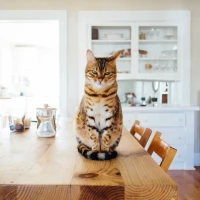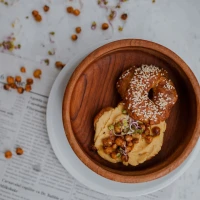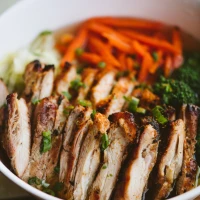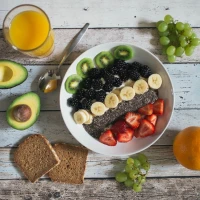For many cat owners, mealtime is merely a routine dump of kibble into a bowl, overshadowed by the hustle and bustle of daily life. Yet, this seemingly trivial act holds the power to significantly impact the well-being of our feline companions. The advent of the slow eating cat bowl has become more than a novelty; it’s a vital tool in the promotion of healthier eating habits in cats. The slow eating cat bowl is a brilliant invention designed to mimic the instinctual foraging and hunting behaviors of cats, transforming gobbling into a rewarding challenge.
Cats are obligate carnivores, and in the wild, they eat small meals frequently throughout the day. This natural eating pattern is often at odds with domestic feeding schedules, which can lead to a host of health problems like obesity, indigestion, and boredom. By introducing a slow eating cat bowl, not only do we cater to their inherent predatory instincts, but we also foster better digestion, weight control, and overall health.
In this comprehensive exploration, we’ll uncover the myriad benefits of slow feeding cat bowl me over recipess, review top models, and provide practical tips for integrating this helpful item into your cat’s daily routine.
Why Invest in a Slow Eating Cat Bowl?
The modern domesticated cat often leads a life of idleness and ease, a stark contrast to the demands of their wild counterparts. This shift has left many cats prone to rapid eating and overeating, with negative consequences that a slow eating cat bowl can help mitigate.
Addressing Fast Eating and Its Perils
Fast eating in cats can lead to issues such as:
- Choking: When cats eat too quickly, they could choke on their food.
- Vomiting: Gobbling down food can cause regurgitation or vomiting shortly after eating.
- Bloat: Eating too fast can lead to a painful and sometimes life-threatening condition known as bloat.
- Obesity: Fast eaters often consume more calories than they need, leading to unwanted weight gain.
A slow eating cat crock pot replacement bowl is specifically designed to slow down your cat’s eating pace, promoting healthier eating habits and reducing the risk of these unpleasant outcomes.
Promoting Digestive Health
A slower eating pace encourages better chewing, which is the first step in the digestion process. With slow feeder cat teriyaki bowls, the food is spread out, obliging cats to navigate the bowl’s structural barriers, thereby eating more deliberately. This attentive eating pattern allows for:
- Enhanced digestion
- Reduced strain on the digestive system
- Preventative measures against gastrointestinal issues
Mental Stimulation and Satisfaction
Boredom can manifest in destructive behaviors and undue stress in cats. Slow feeder cat yummy bowl andersons present an opportunity to mentally engage your cat. As they maneuver to retrieve kibble, they’re mentally stimulated, which echoes the satisfaction felt after hunting.
Weight Management
By controlling the speed of consumption, slow feed cat half baked harvest salmon bowls assist in preventing overeating. A satiated cat will more likely stop eating when full, helping maintain a healthy weight.
Anatomy of a Slow Eating Cat Bowl
Understandpioneer woman egg roll in a bowlg the unique features of these bowls can help you choose the perfect fit for your cat’s needs. Here are some components you might find:
- Raised Ridges: Tactically placed, these ridges create an intricate maze.
- Varying Levels: Different heights add complexity.
- Non-Slip Base: Keeps the bowl stationary.
- Material Choices: These range from plastic to stainless steel and ceramic.
Selecting the Perfect Slow Feeder
Not all slow feed cat bowls are created equal. Here’s a closer look at how to select one that suits your cat best.
Size and Complexity Based on Your Cat’s Prowess
Consider your cat’s size and skill level. Kittens or less nimble cats may benefit from simpler designs, while larger or more clever cats may require a more complex slow feeder.
Considering Material for Hygiene and Health
Plastic, while inexpensive, can harbor bacteria. Ceramic and stainless steel options offer easier cleaning and can be more hygienic.
Ease of Use and Cleaning
Look for dishwasher-safe models or ones that easily come apart for hassle-free maintenance.
How to Introduce Your Cat to the Slow Feeding Bowl
Transitioning to a slow eating cat bowl can be seamless with the right approach. Patience and persistence are key.
Starting Gradually
Introduce the new bowl alongside the old one. Fill the slow feeder with a small amount of kibble to encourage exploration.
Positive Reinforcement
Using treats or your cat’s favorite kibble in the slow feeding bowl can be a powerful motivator. Praise your cat when they interact with the new feeder.
Monitoring and Adjustment
Observe your cat’s initial reactions and be ready to make adjustments. Experiment with different locations for the bowl and feeding times to find what works best.
Troubleshooting Tips
Some cats may struggle to adapt. Here’s how to tackle common issues:
- Frustration: If your cat gets frustrated, make the challenge easier by removing some of the obstacles or choosing a simpler bowl.
- Rejection: Some cats may initially ignore the new bowl. Be patient and continue to offer small portions in the slow feeder.
Slow Eating Cat Bowl Reviews: Top Picks for Healthier Habits
Adding reviews of top bowls can guide owners. Pick models renowned for design, durability, and effectiveness.
Model A - The Beginner’s Choice
Great for cats new to slow feeding, Model A offers undemanding challenges.
Model B - The Interactive Adventure
Model B’s sophisticated design keeps advanced felines intrigued.
Model C - The Health-Conscious Option
Constructed from antimicrobial materials, Model C assures a hygienic dining experience.
DIY Slow Feeder Solutions
Customizing your cat’s feeding experience doesn’t need to be expensive. Here’s how you can create your own slow feed solution:
Using Muffin Tins
Dispense kibble into each cup for a straightforward, slow-eating experience.
Ball and Cup Method
Scatter kibble inside cups of various sizes. Place a lightweight ball on top for added challenge.
Feeding Strategies for Multi-Cat Households
Feeding multiple cats can lead to competition. These strategies can maintain peace:
- Individual Bowls: Provide each cat with a slow feeder to avoid animosity.
- Separate Feeding Areas: Dedicate different areas to prevent confrontations.
- Staggered Feeding Times: Introduce portions at different times to reduce conflict.
Conclusion: Embracing the Benefits
The slow eating cat bowl is not just a passing fad; it’s an essential component of a modern feline’s well-being. From bolstering digestive health to offering mental stimulation, the benefits are comprehensive and far-reaching.
Committing to Your Cat’s Health
Choosing a slow eating cat bowl is a commitment to enriching your cat’s life and health. It represents a proactive step towards preventive care and a responsive approach to your companion’s instinctual needs.
The Long-Term Impact
With continued use, a slow eating cat bowl promises a happier, healthier feline—reducing health risks and potentially lowering veterinary bills through better dietary habits.
Cats bring so much to our lives; let’s return the favor by providing them with the utmost care in their daily nourishment. Embrace the slow feeding cat bowl and unleash healthier habits for your feline friend today!










